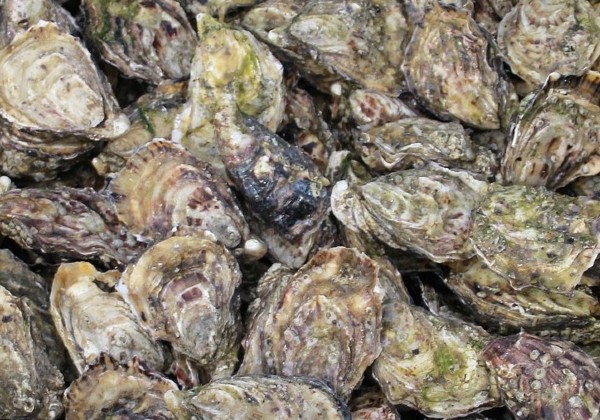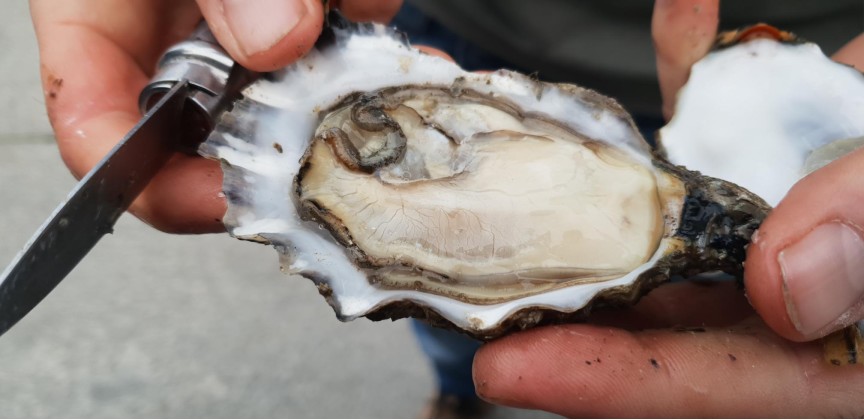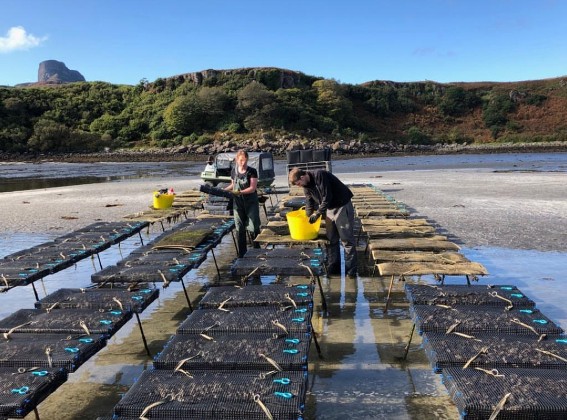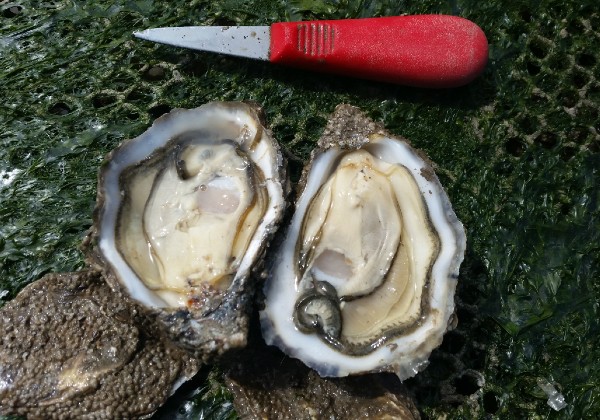There are two types of oysters cultivated and eaten in Ireland: the native or European flat oyster (Ostrea edulis), and the Pacific oyster (Magallana gigas or Crassostrea gigas). The Irish name for oyster is ‘oisre’. Cherished by seafood enthusiasts worldwide, oysters have a rich and storied history dating back thousands of years.
Ancient Beginnings
- Antiquity: The archaeological record shows that oysters go back over 150 million years, back to the time of the dinosaurs. Oysters were revered by ancient civilizations such as the Greeks, Romans, and Egyptians. They were often associated with Aphrodite, the Greek goddess of love and fertility who was said to have sprung up from the ocean on an oyster shell. The term “Aphrodisiac”, meaning to heighten love, has been related to oysters ever since. Oyster cultivation in Ireland dates back to the 13th century but consumption of oysters in Ireland has been a tradition for over 4,000 years.
- Harvesting Methods: In ancient times, oysters were gathered from natural oyster beds along coastlines or harvested from shallow waters using rudimentary tools like spears or rakes.
Middle Ages and Renaissance
- Luxury Item: During the Middle Ages, oysters became a symbol of wealth and status, enjoyed primarily by the aristocracy and royalty. They were often served at lavish feasts and banquets.
- Monastic Oyster Cultivation: Monasteries in Europe played a significant role in oyster cultivation during this period. Monks developed techniques for oyster farming and constructed oyster ponds to meet the demand for this prized delicacy.
Exploration and Colonization
- New World Discovery: European explorers introduced oysters to the Americas during the age of exploration. Native American tribes had been consuming oysters for centuries before the arrival of Europeans.
- Oyster Trade: Oysters became a valuable commodity in the New World, with bustling oyster markets emerging in cities like New York and Boston. Oyster bars and restaurants proliferated, catering to a growing demand.
Industrialization and Modernization
- Industrial Revolution: Up until the early 1800’s Dublin Bay hosted naturally occurring oyster reefs which were harvested by hand and boat in the Clontarf, North Bull areas of the bay. These reefs were so abundant that the oysters were sold as ‘fast food’ by street sellers to many Dubliners in the capital. The Industrial Revolution brought significant changes to oyster harvesting and processing. Advances in transportation and refrigeration enabled oysters to be shipped across long distances, expanding their availability.
- Oyster Farming: In the late 19th century, oyster farming techniques began to evolve, with the development of oyster hatcheries and aquaculture methods. This allowed for more efficient and sustainable oyster production.
Contemporary Oyster Culture
- Culinary Delicacy: Today, oysters remain a sought-after delicacy enjoyed by food enthusiasts worldwide. They are celebrated for their unique flavor profiles, which vary depending on their origin and species; their ‘merroir’. The unique blend of wild Atlantic waters, clean freshwater rivers and minerals from the landscape makes each Irish oyster a unique taste experience. Due to abundant plankton and the exceptional growing conditions around the Irish coast, oysters from Ireland have a distinctively high meat content and in recent years are particularly sought after on the international market.
- Environmental Concerns: Despite their culinary popularity, oysters face environmental challenges such as rising ocean salinity and temperature, water pollution, and disease. Despite this a growing demand for oysters both at home and abroad has resulted in close to 130 oyster farms nationwide producing around 11,000 tonnes of pacific oysters annually and employing over 1,000 people. Conservation efforts are also underway to protect native oyster populations and restore their natural habitats.
- Health benefits: Oysters are packed with minerals and vitamins and an excellent source of zinc, calcium and selenium as well as vitamin A and B12 meaning they can boost the immune system and lower cholesterol. They make for a very healthy food choice being low in calories as well as rich in protein.
Oyster festivals are held in Ireland and worldwide to celebrate the oyster. These oyster festivals are attended by tens of thousands of people who enjoy fresh oysters; as well as live music and entertainment, local foods and drinks. The world’s oldest oyster festival is the Galway International Oyster Festival (established 1954), and is held on the last weekend of September. Other popular festivals are held annually in Carlingford and Cromane.




